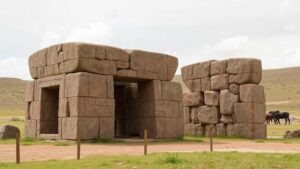Tracking polar bears as they hunt along melting ice floes in the Arctic.
Tracking Polar Bears as They Hunt Along Melting Ice Floes in the Arctic
The Arctic region is increasingly facing the consequences of climate change, a phenomenon that significantly affects polar bears, their habitat, and their hunting patterns. As the ice continues to melt due to rising temperatures, scientists and wildlife researchers are employing innovative methods to track polar bears as they hunt along these unstable ice floes. Understanding these methods and the eventual impacts on biodiversity is crucial for conservation efforts.
The Polar Bear’s Dependence on Sea Ice
Polar bears (Ursus maritimus) are uniquely adapted to their frigid environment, relying on sea ice as a platform for hunting seals, their primary food source. According to the World Wildlife Fund, about 70% of a polar bears diet consists of seals, which they hunt by waiting near breathing holes in the ice. But, as sea ice diminishes–research indicates a reduction of over 40% in summer sea ice since the late 1970s–the hunting strategies and survival of these magnificent creatures are jeopardized.
Technological Advancements in Tracking
To study polar bears and their hunting habits in this changing landscape, researchers utilize a range of tracking technologies:
- GPS Collars: Scientists fit polar bears with GPS collars that provide real-time data on their movements and behavior. For example, a study conducted in the Beaufort Sea region in 2018 used GPS collars to track 27 polar bears, revealing their patterns of movement in response to changing ice conditions.
- Satellite Images: High-resolution satellite imagery offers insights into sea ice coverage and can be compared with bear movement data. National Snow and Ice Data Center provides ongoing satellite monitoring of ice conditions, which is critical when analyzing polar bear habitats.
- Remote Cameras: Researchers also deploy remote cameras on ice floes to capture footage of hunting behavior, aiding in understanding which hunting strategies are most effective under the current environmental conditions.
Case Studies: Hunting Behaviors
One notable case study occurred in May 2020, when researchers tracked a female polar bear named P-031 in the Arctic National Wildlife Refuge. Through her GPS collar, they observed her movements along rapidly melting ice floes as she attempted to hunt seals. The data illustrated that, due to the loss of sea ice, P-031 was forced to swim longer distances to find stable hunting grounds, reflecting a broader trend among polar bears facing similar challenges.
Implications of Melting Ice on Hunting Efficiency
The efficiency of hunting is largely affected by the integrity of sea ice. Research conducted by the Arctic Council highlighted that as ice decreases, polar bears not only have to travel further but also expend more energy in their search for food. This can lead to increased mortality rates, particularly among younger bears and nursing mothers. According to a 2021 study published in Ecology and Evolution, the energy expenditure required to hunt in fragmented ice can reduce the bears overall fat reserves, making them more vulnerable to starvation.
Conservation Efforts and Future Outlook
In response to these evolving challenges, numerous conservation efforts are underway to protect polar bears and their habitat:
- Stricter Regulations: Organizations like the International Polar Bear Conservation Treaty aim to regulate activities in the Arctic that may interfere with polar bear habitats.
- Community Involvement: Local communities engaged in monitoring and safeguarding polar bear populations, with traditional ecological knowledge being integrated into scientific research.
- Global Climate Initiatives: Consumer awareness initiatives are stressing the importance of reducing carbon footprints to mitigate climate change, which is pivotal for the preservation of the polar bear’s habitat.
Actionable Takeaways
For individuals who wish to contribute to the conservation of polar bears and their habitat, consider the following actions:
- Educate yourself and others about climate change and its impact on Arctic ecosystems.
- Support organizations that work toward polar bear conservation and habitat protection.
- Advocate for policies aimed at reducing carbon emissions and protecting the Arctic environment.
To wrap up, tracking polar bears as they hunt along melting ice floes provides valuable insights into their behavior and the broader implications of climate change on biodiversity. By employing technology and fostering community engagement, researchers and conservationists are better equipped to address the challenges polar bears face in a rapidly changing world.


